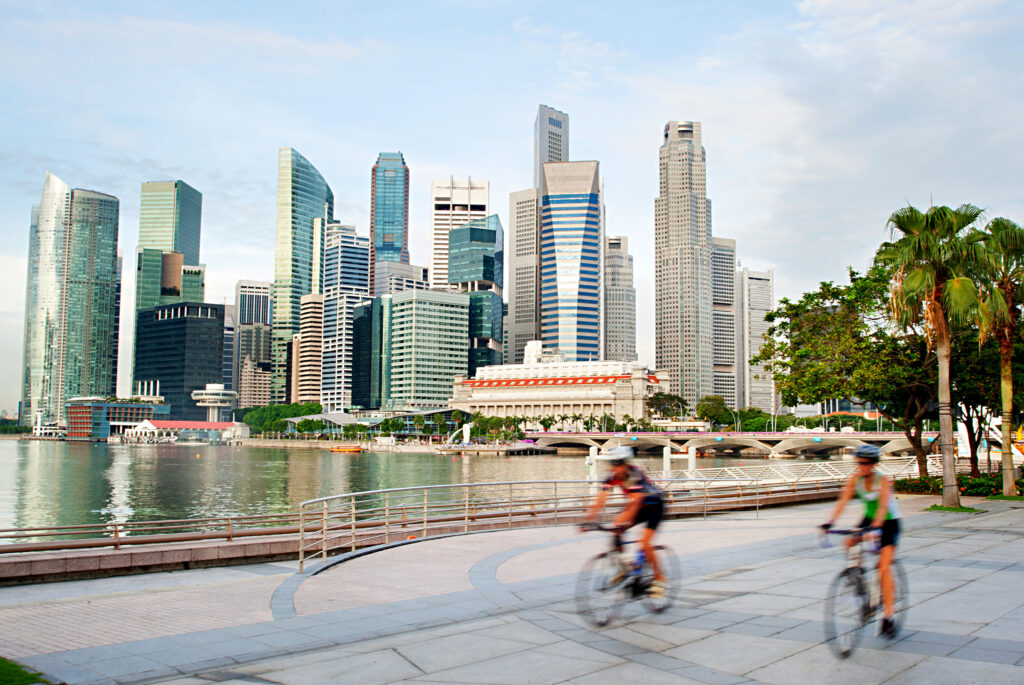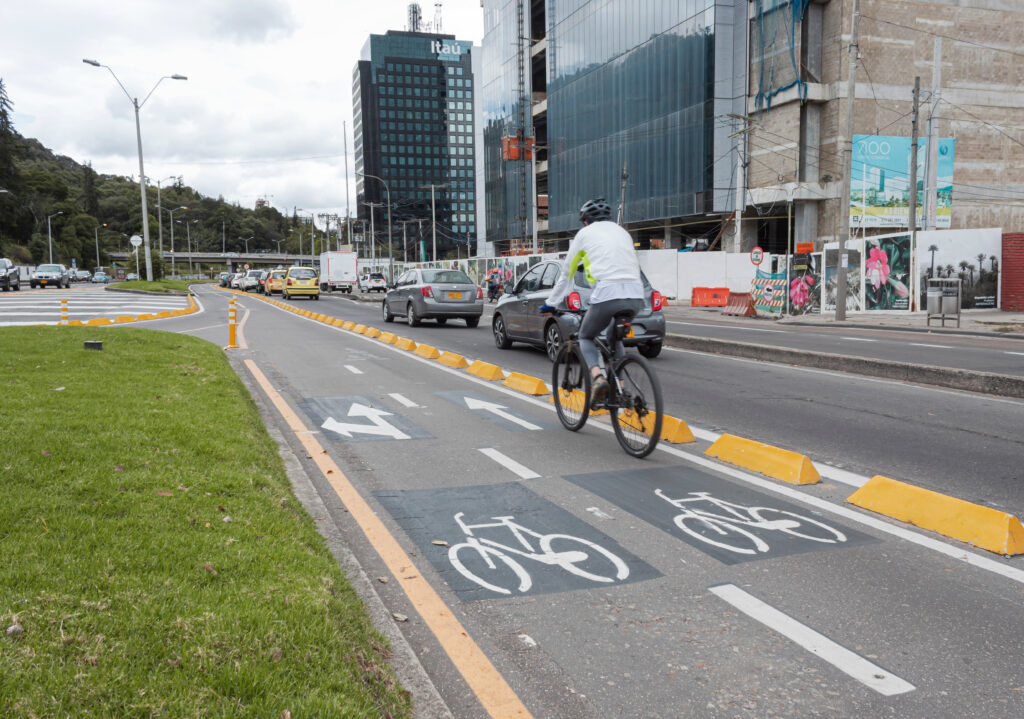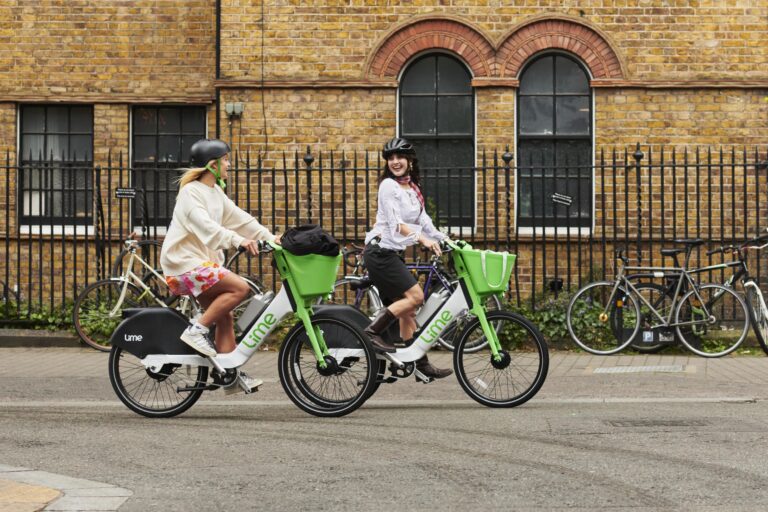From London’s living streets to Singapore’s seamless cycling corridors and Bogotá’ bustling Ciclovías, cities around the world are reimagining how people move. CiTTi Magazine delves into how each is implementing active travel through their own unique cultural lenses
Throughout the history of the world, how cities are designated as such has changed in response to the cultural, economic and social conditions of the time. Traditionally, towns in the UK required a cathedral to achieve their city status, with St Davids in Pembrokeshire, Wales the nation’s smallest at approximately 1,800 residents. German towns needed a Stadtrecht (a charter) while Latin-founded South American cities were done so through proclamation or erecting a flag.
Globalisation has led to modern cities converging their urban planning in response to similar demands from their citizenry. Advanced public transit, efficient zoning and integrated transportation are all stables of a well-run, connected urban environment. Increasingly, as governments focus on their green initiatives, facilitating active travel has become a vital part of urban mobility initiatives, while advances in traffic management systems and road user charging technologies are opening up routes previously inaccessible.
How any two schemes are actuated, however, is as different as the two places where they’re implemented. The unique cultural, geospatial and economic pressures of different regions have resulted in highly specialised schemes that respond to the needs of the people they service. Here, CiTTi Magazine delves into a few of the world’s major cities to see how each balances their active travel with the conundrum of city life.
London
As the capital of the UK, a short ferry ride from Western Europe and the centre of global finance, London has welcomed many different people into its’ arms. Combined with a history of international influence, the city’s streets have been layered over each other for time immemorial, producing a layout that can be confusing to tourist and resident alike.
Resultantly, active travel initiatives have focused on integrating the complex web of interconnected urban areas that form the capital in the most optimum methods possible. As with many Western European cities, such as Groningen in the Netherlands, filtered permeability has become increasingly popular in London. Filtered permeability shuts roads to vehicle traffic through barriers such as planters or semi-closes them through bollard placement. Cyclists and walkers can pass through, which creates localised clean air zones but redirects traffic. If there is a workable solution around the barriers, such as active travel options like e-bikes, then filtered permeability can facilitate faster travel. In London, e-mobility has soared in popularity, with supporting infrastructure expansion enabling rental services to operate across the majority of Greater London.
FAST FACT: Singapore boasts over 730km of cycling paths and park connectors. Source: Singapore Land Transport Authority
Cheap, reliable and able to be left behind, such services compliment the fast-paced nature of London-living. “Our core mission is all about reducing emissions and making cities more liveable,” says Alicem Pleasant, senior public affairs manager at shared electric mobility company Lime.
“We offer sustainable alternatives designed to shorten car journeys, so naturally we’re helping cut down traffic and lower carbon emissions.” Transport for London (TfL) has overseen a huge increase in cycling infrastructure to support the increasing popularity. The transport body reports that its network has quadrupled in size since 2016, with more than 400km (267 miles) of cycling infrastructure available throughout Greater London. Lime and other e-mobility services have sought to facilitate this increase, both to augment business plans and as part of wider commitments to community cycling.
“We’re collaborating with local authorities through our London Action Plan – our comprehensive programme to improve parking, operations, access, and safety across the UK capital,” Pleasant continues. “We’re investing in our parking infrastructure fund to create at least 2,500 more dedicated parking spaces. As our service has grown in London, we’ve realised the importance of giving back to the cycling community and ensuring it grows with us. It’s been fantastic seeing the impact the fund has had on cycling communities since its launch. In 2025, we’re increasing our contribution to help even more groups and organisations get funding.”
London, as keen adopter of clean air zones, has implemented a host of congestion management schemes to reduce pollution, increase public transport funding and support active travel initiatives. The most famous example is the Ultra Low Emission Zone (ULEZ), a Greater London-wide scheme that prevents non-compliant (Euro 6 for diesel or Euro 4 for petrol or lower) vehicles from entering the city without paying. Non-complaint vehicles are subject to a £12.50 daily charge with a £100 charge levied against heavy goods vehicles.
Since its expansion in 2021, TfL has reported a 44% reduction in non-compliance with more than £875m of total revenue sourced from the toll. While TfL states that it has only collected £226m in fees and fines, much of it has been designated for active travel as a legal prerequisite for ULEZ implementation. This includes expansion of the Cycleway network, with Cycleway 4, Cycleway 9, and the Quietways network all upgraded in recent years following implementation.
Singapore
Most cities are built upon centuries of millennia of settlement, once tiny trading posts coalescing into major capitals that dot the globe today. Singapore was no different, springing up as a crucial maritime trading port under the rule of a host of regional and global powers. Today, the Southeast Asian city-state is a highly developed market economy with one of the highest gross domestic product (GDP) per capita rates in the world. Whilst the nation’s success has catapulted its people out of poverty, it cannot escape its geographical limitations. With a land area 2.5 times smaller than London at roughly 607m² (1,570km²), and restricted by Malaysia to its north and the intersection of the Indian Ocean and the Pacific Ocean to its south, active travel initiatives must compete for limited, highly competitive space to achieve their goals.
Singapore’s Ministry of Transport (MOT), has been busy expanding the city’s cycling infrastructure. The current goal is to increase the network to 1,300km by 2030, linking existing Mass Rapid Transit (MRT) stations, bus interchanges and high pedestrian usage areas. Existing cycling infrastructure has also been upgraded with skid-resistant coating and coloured terracotta for visibility to improve pedestrian and cyclist safety. To this end, Singapore’s Land Transport Authority (LTA), which sits under the MOT, has introduced its ‘Friendly Streets’ initiative to create a safe environment for all residents, focusing on active travel improvements to facilitate this change.

“One of the key features of all Friendly Streets areas, is an emphasis on pedestrian safety,” said the previous senior minister of state for transport, Dr Amy Khor at MOT Committee of Supply Debate 2025. “This is why Friendly Streets have road humps and narrower road lanes to slow down speeds. Speed limits are also lowered to 40km/h.” Previously non-inclusive roads have been remodelled to incorporate barrier-free crossings (removal of kerbs and the addition of vehicle ramps). Wider footpaths and dedicated cycling spaces have also been added to increase active travel opportunities.
“We will repurpose the roadside parking lots along Tanjong Pagar Road to provide wider footpaths and cycling paths,” Khor added. “Centre dividers and road humps will be added to slow down vehicles. These enhancements will create a safer and more comfortable walking and cycling experience.” Additionally, the LTA has developed a plan to reduce car-usage in the city, with cleaner air, reduced congestion and an increase in productivity cited as driving factors. During development of the Land Transport Master Plan 2040, more than 7,400 Singaporeans shared their views to help influence the final document. Resultingly, 20-minute neighbourhoods have been prioritised, with cycling and walking preferable to cars and public transport to reduce peak journey times.
Additionally, from the 2028, the LTA plans to ensure that personal mobility aids (PMA) – devices that aide people with a range of mobility issues – used on public paths are restricted to 6km/h. It’s hoped that regulating PMAs will help integrate the increased active travel throughout the city.
Bogotá
Colombia is more often associated with vibrant, densely populated urban areas, replete with zoning and routing issues that come with poor planning. This couldn’t be further from the truth. Seeking to alleviate congestion pressures in the older parts of the city, Colombia’s capital, Bogotá, pioneered the weekly Ciclovía, closing more than 120km of roads every Sunday to motor vehicles. These roads are opened to pedestrians, cyclists and non-motorised vehicles. In total, the weekly Ciclovía closes approximately 138km of roads, granting 1.5 million residents free access public spaces.
“We are committed to a more sustainable city, where active mobility is a priority,” said Bogotá mayor Carlos Fernando Galán at the project’s inception. “Expanding cycling networks and promoting the use of bicycles are fundamental steps toward achieving this active travel goal.” To support this initiative, Bogotá has expanded its ciclorrutas network, creating over 660km of dedicated cycling lanes. These lanes direct cyclists into safe routing, creating space for existing vehicles to maintain higher speeds, which has been found to reduce congestion.

The integration of these cycling paths with public transport hubs ensures seamless connectivity and supports the Bogotá goals of connecting historically underserved neighbourhoods to the broader urban network, providing safe and accessible routes for all citizens. Local government reports highlight that over 860,000 residents in southern districts now benefit from newly expanded Ciclovía routes and cycling infrastructure throughout the city. Environmental benefits are also evident.
By reducing reliance on cars, active travel initiatives help cut emissions and improve air quality. Initiatives such as Ciclovía and the city’s network of ciclorrutas contribute directly to Bogotá’s climate and sustainability goals, demonstrating that urban mobility can be both efficient and environmentally responsible.
This article was originally published in the September 2025 issue of CiTTi Magazine.
Achievements and innovations in alternative fuels will be recognised and celebrated at the fourth annual CiTTi Awards on 25 November 2025 at De Vere Grand Connaught Rooms in London. Visit www.cittiawards.co.uk to learn more about this unmissable event for the UK’s transportation sector!





